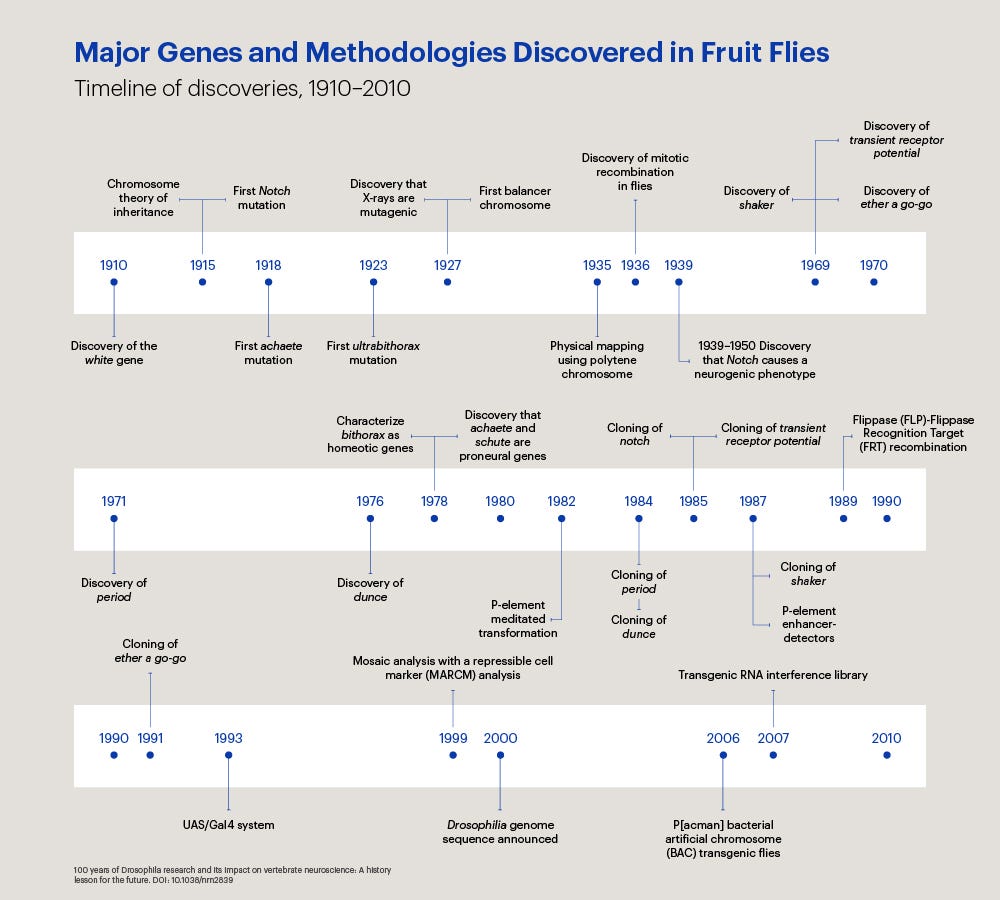
This is one of the animals that are found in every corner of the world except Antarctica. You would probably think this is some kind of drawing made by a young child but I kid you not, this is a real fly with its bulgy red eyes and strong wings. This little fly would prove to be the horror story of many children and some adults as well. These flies live and die very quickly with a rapid life cycle living only 40-50 days.

Because of their short gestration period and their relatively low number of genes, Fruit Flies are favorites for genetic research.
Visited my Nephew ( Michael Levine ) at his Lab, and I saw a fruit fly with legs on its head instead of antennas, due to gene modification.
https://endpoints.elysiumhealth.com/model-organisms-drosophila-melanogaster-fruit-fly-928de0046a9c

https://www.yourgenome.org/facts/why-use-the-fly-in-research